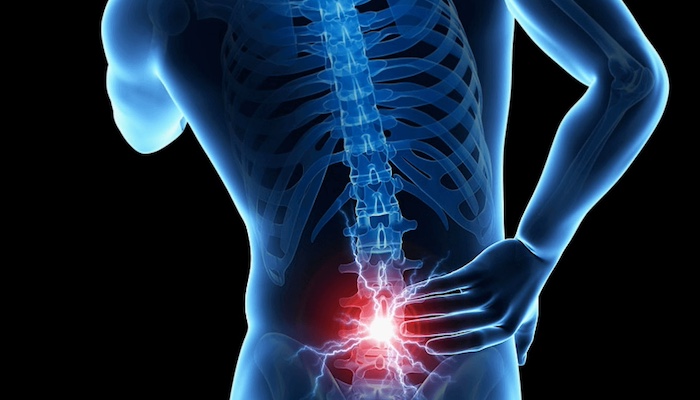
Coccydynia refers to any persistent tailbone pain.
The tailbone, located at the very bottom of the spine, is medically known as the coccyx. Coccydynia is typically felt as a localized pain that usually worsens when sitting or with any activity that puts pressure on the bottom of the spine.
The condition is much more common in women than men. It is usually caused by trauma to the tailbone or surrounding area, such as a backward fall or childbirth. On rare occasions, an infection or tumor can also cause pain in the coccyx.
Understanding Tailbone Pain
Coccydynia may be referred to in various terms, such as:
- Coccygodynia
- Coccygeal pain
- Coccyx pain
- Coccyaglia
- Tailbone pain
The various terms are all used to describe one set of symptoms in the tailbone that result in either persistent pain or intermittent, activity-related pain.
History of Coccydynia
Coccydynia has a long history of being misunderstood. In the early 1900s, coccydynia was a popular diagnosis for all types of lower back pain. A fairly extreme treatment, the surgical removal of the coccyx (coccygectomy), was commonly undertaken to treat low back pain. At best, this operation had variable results.
General opinion then changed completely, and it was often postulated that since the condition mostly affected women it was in some way related to "neurosis." The assumption was that if the operation did not work, it was because the pain was psychological in origin.
Studies that have measured the efficacy of psychotherapy as a treatment for coccydynia have found little success, and conclude that coccydynia does exist as a medical condition.
The condition is now considered a valid diagnosis and is treated as such.
How Tailbone Pain Is Managed
The goal of coccydynia treatment is usually to reduce pain by keeping pressure off of the tailbone, easing inflammation or muscle tension that adds to the pain, or reducing pain signals to the brain using medication. A combination of treatments and activity modification usually suffices to control or alleviate tailbone pain
In rare cases, surgery to remove all or part of the coccyx may be recommended, but the surgery (a coccygectomy) is typically only considered if the pain is severe and at least several months of non-surgical treatment and activity modification has been ineffective in relieving pain.
An estimated 90% of coccydynia cases resolve with non-surgical treatments, and coccyx pain will often get better with no treatment at all.
Precision Pain Care and Rehabilitation has two convenient locations in Richmond Hill – Queens, and New Hyde Park – Long Island. Call the Queens office at (718) 215-1888 or (516) 419-4480 for the Long Island office to arrange an appointment with our Interventional Pain Management Specialists, Dr. Jeffrey Chacko or Dr. Sonny Ahluwalia.















